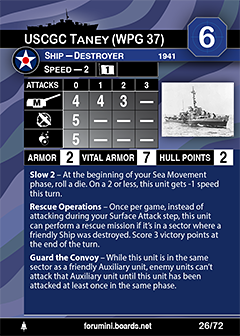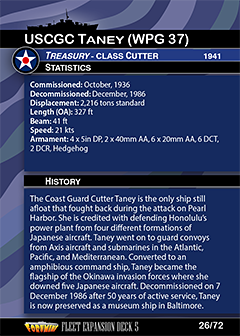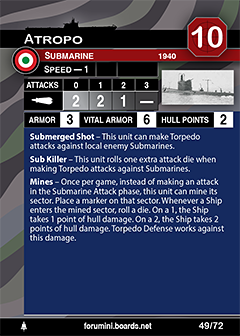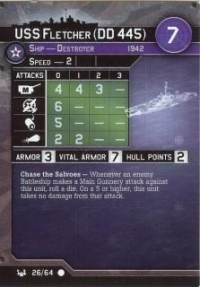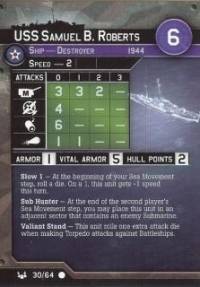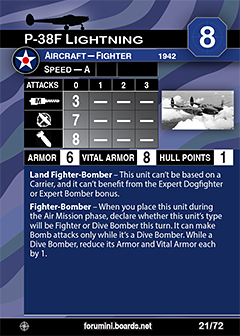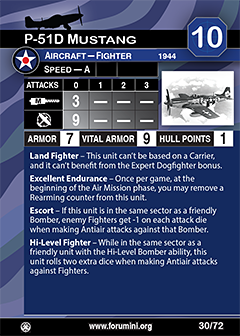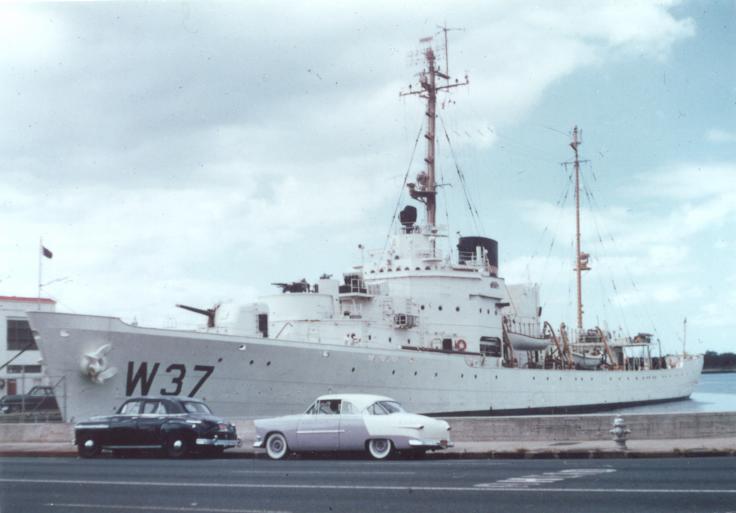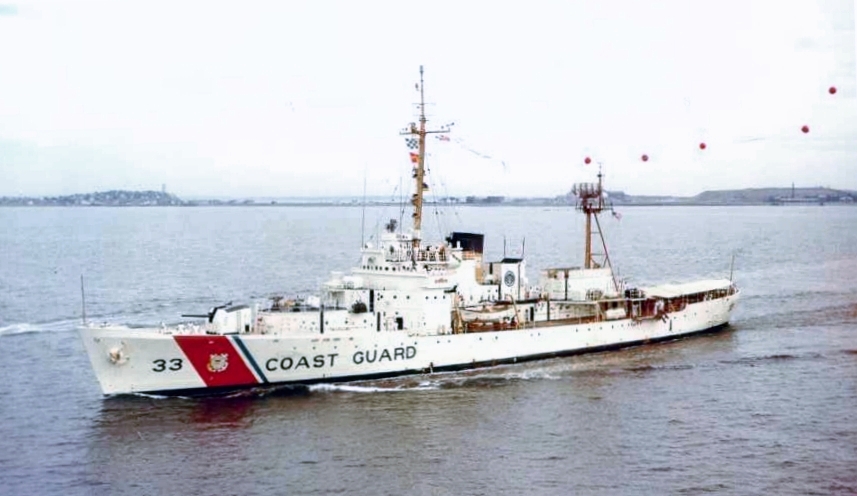Prototype: USCGC Taney (WPG/WAGC/WHEC-37) (/ˈtɔːni/) is a United States Coast Guard High Endurance Cutter, notable as the last warship floating that fought in the attack on Pearl Harbor, although Taney was moored in nearby Honolulu Harbor not Pearl Harbor itself (a non-combatant vessel at Pearl Harbor, the US Navy tug Hoga, also remains afloat). She was named for Roger B. Taney (1777–1864), who was at various times: U.S. Attorney General, Secretary of the Treasury, and Chief Justice of the United States.
She is also one of two Treasury-class (out of seven total) Coast Guard cutters still afloat. Serving her country for 50 years, the Taney saw action in both theaters of combat in World War II, serving as command ship at the Battle of Okinawa, and as part of fleet escort in the Atlantic and Mediterranean. She also served in the Vietnam War in Operation Market Time. Taney patrolled the seas working in drug interdiction and fisheries protection.
She was decommissioned in 1986, and has served as a museum ship in the Inner Harbor of Baltimore, Maryland since. She was designated a National Historic Landmark in 1988.
She is also one of two Treasury-class (out of seven total) Coast Guard cutters still afloat. Serving her country for 50 years, the Taney saw action in both theaters of combat in World War II, serving as command ship at the Battle of Okinawa, and as part of fleet escort in the Atlantic and Mediterranean. She also served in the Vietnam War in Operation Market Time. Taney patrolled the seas working in drug interdiction and fisheries protection.
She was decommissioned in 1986, and has served as a museum ship in the Inner Harbor of Baltimore, Maryland since. She was designated a National Historic Landmark in 1988.
Class History: The Treasury-class cutter was a group of seven high endurance cutters launched by the United States Coast Guard between 1936 and 1937. The class were called the "Treasury class" because they were each named for former Secretaries of the Treasury. These ships were also collectively known as the "327's" as they were all 327 feet (100 m) in length. The Treasury-class cutters proved highly adaptable, dependable, versatile and long-lived warships. Most served the United States for over 40 years, including with distinction and heroism through World War II, Korea, and Vietnam.
In the words of naval historian John M. Waters, Jr., they were truly their nation's "maritime workhorses. The 327s battled through the 'Bloody Winter' of 1942–43 in the North Atlantic," with the ships heroically fighting off and destroying German U-boats, and rescuing survivors from torpedoed convoy ships. Roles of the 327s included serving as amphibious task force flagships in World War II, pilot search and rescue (SAR) during the Korean War, and a critical component of Operation Market Time during the Vietnam War. "Most recently, these ships-that-wouldn't-die have done duty in fisheries patrol and drug interdiction. Built for only $2.5 million each, in terms of cost effectiveness we may never see the likes of these cutters again."
Commencing in the late 1970s the Treasury-class cutters were gradually replaced or their duties taken over by larger modern Hamilton-class 378-foot (115 m) high endurance cutters.
In the words of naval historian John M. Waters, Jr., they were truly their nation's "maritime workhorses. The 327s battled through the 'Bloody Winter' of 1942–43 in the North Atlantic," with the ships heroically fighting off and destroying German U-boats, and rescuing survivors from torpedoed convoy ships. Roles of the 327s included serving as amphibious task force flagships in World War II, pilot search and rescue (SAR) during the Korean War, and a critical component of Operation Market Time during the Vietnam War. "Most recently, these ships-that-wouldn't-die have done duty in fisheries patrol and drug interdiction. Built for only $2.5 million each, in terms of cost effectiveness we may never see the likes of these cutters again."
Commencing in the late 1970s the Treasury-class cutters were gradually replaced or their duties taken over by larger modern Hamilton-class 378-foot (115 m) high endurance cutters.
Country: The U.S. is a country of 50 states covering a vast swath of North America, with Alaska in the northwest and Hawaii extending the nation’s presence into the Pacific Ocean. Major Atlantic Coast cities are New York, a global finance and culture center, and capital Washington, DC. Midwestern metropolis Chicago is known for influential architecture and on the west coast, Los Angeles' Hollywood is famed for filmmaking.
Item created by: gdm on 2019-12-16 09:42:47. Last edited by gdm on 2022-10-10 12:29:55
If you see errors or missing data in this entry, please feel free to log in and edit it. Anyone with a Gmail account can log in instantly.
If you see errors or missing data in this entry, please feel free to log in and edit it. Anyone with a Gmail account can log in instantly.


